Remember Our Working Horses
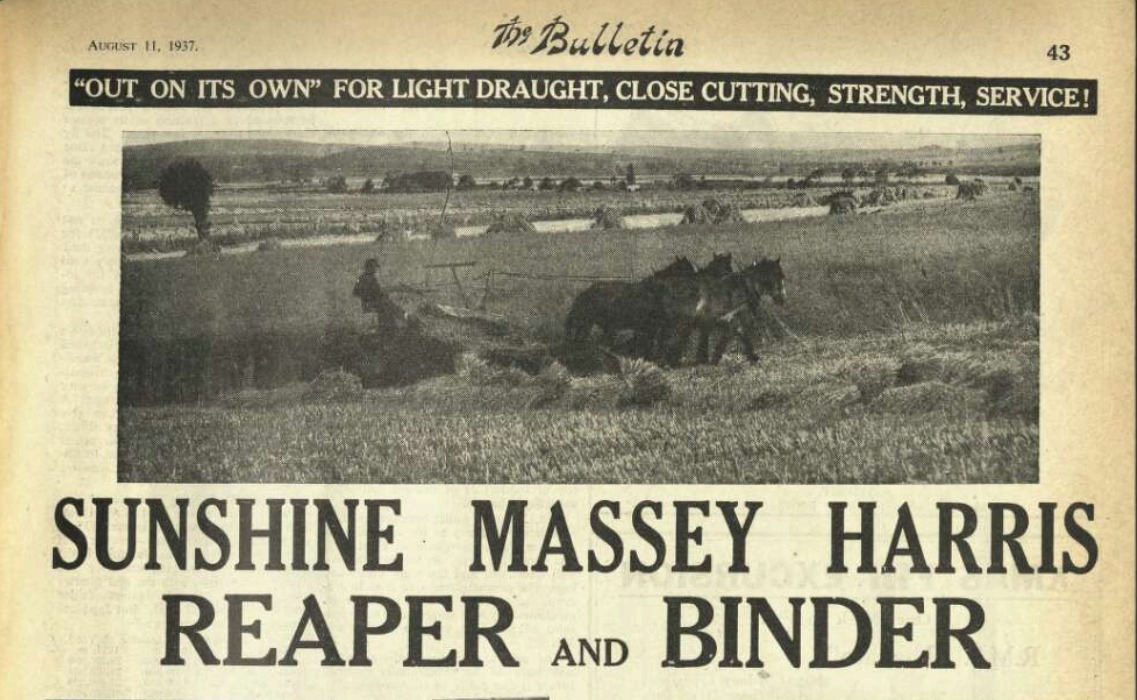
Waler Data Base @ Facebook. Image: The Bulletin, 11 August 1937 Sunshine Massey Harris Reaper and Binder, featuring (a FB follower) Martin’s dad!
It seems our Facebook page inspires personal connection with our horse history, which is what we are aiming for, in order to remember the contribution horses made to our nation and to remind us of how much we will lose if we let the old-fashioned horse just disappear. There was a transition from four-legged horse-power to mechanical horse-power, with some wonderful photographs in the archives juxtaposing the two.
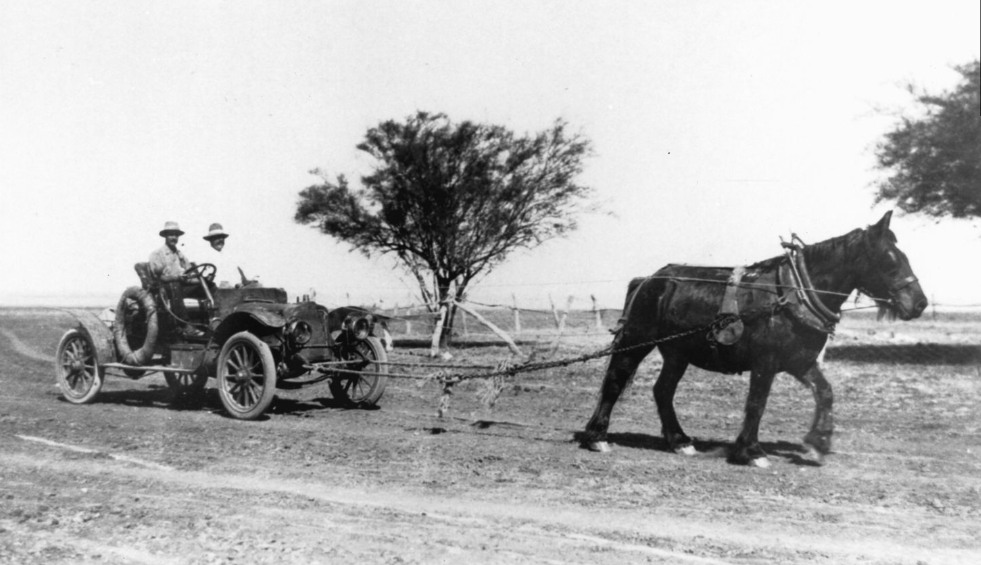
A. E. Ogg and Mr Bloxsome returning from a bushfire with their car towed by the horse.’ State Library Qld
We’ve collected some of the themes and personal photographs from the last few months and would of course love to see this amazing flow of lived experience continue to flow for the enjoyment and education of all who come across our website.
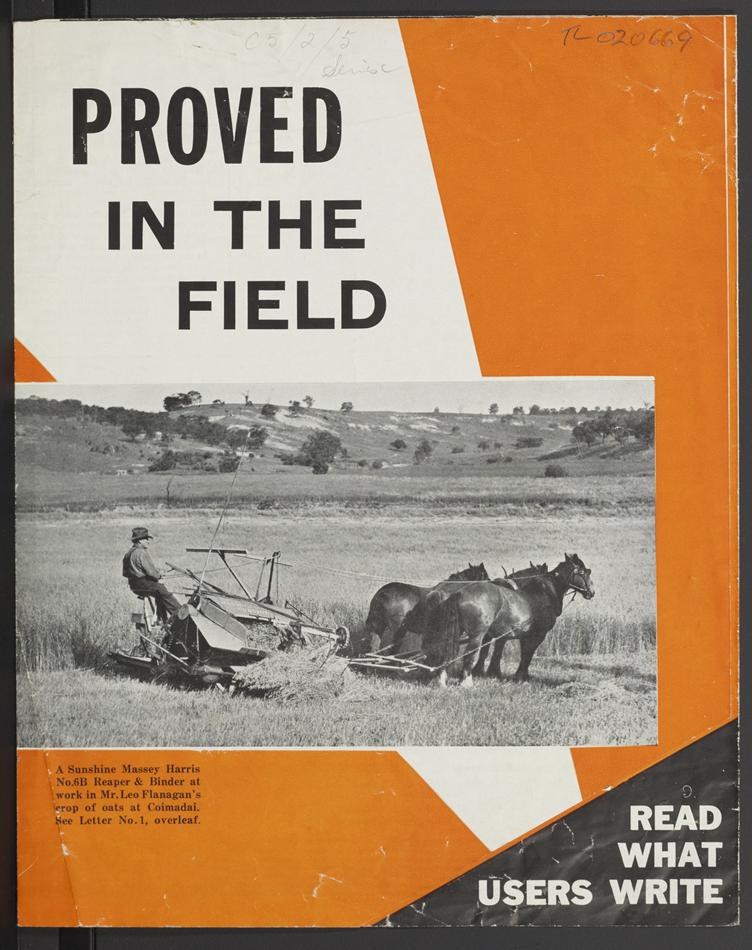
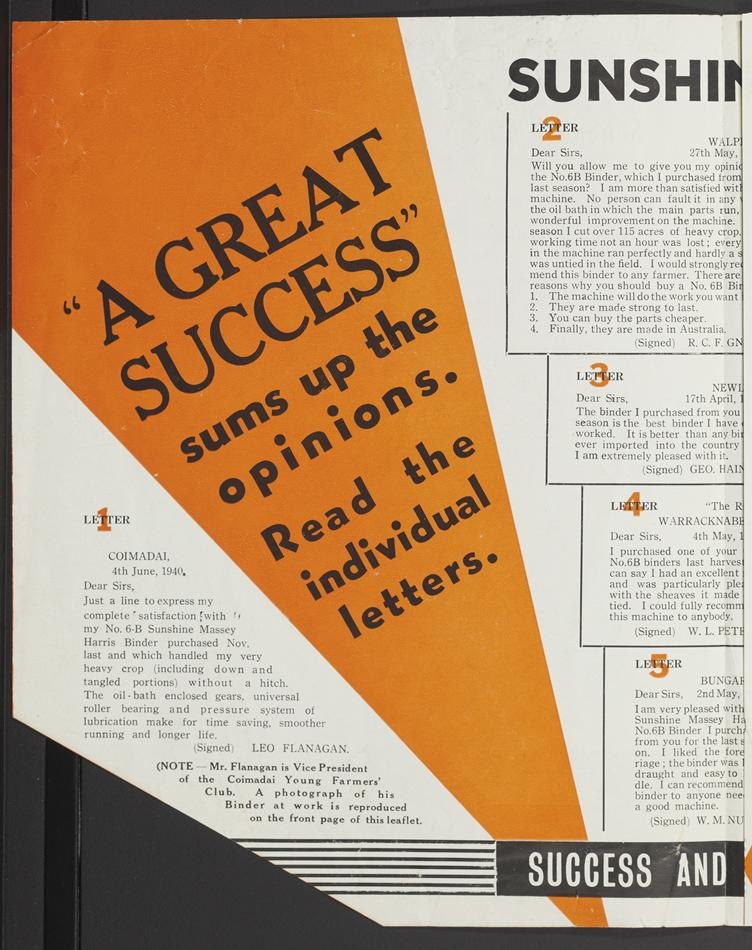
Terrific photo sent in by Martin Flanagan – an advertisement starring his Dad! – photo taken at Coimadai in Victoria, using a Sunshine Massey Harris reaper binder. 1940 publicity brochure produced by H.V McKay Massey Harris Pty Ltd, image from Collections.MuseumsVictoria.com.au
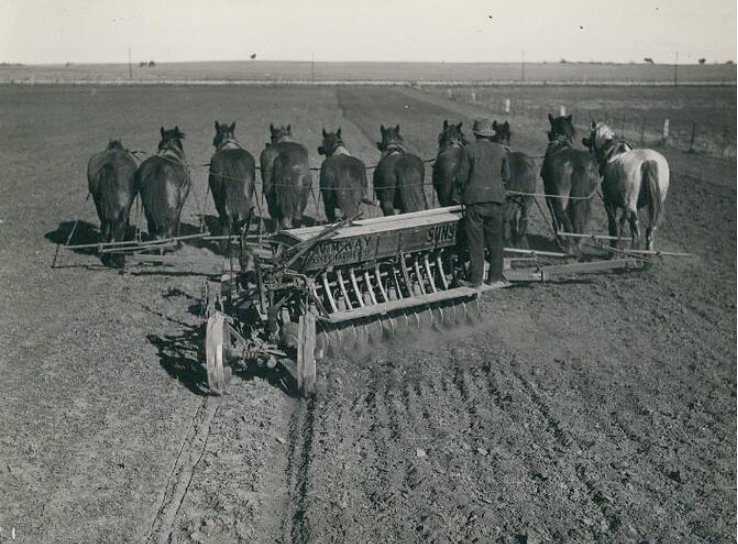
‘H.V. McKay Massey Harris, Sunderseeder Seed & Fertilizer Drill… possibly Mr. W. Fraser, standing on a New 14 disc Sunshine Sunderseeder, being pulled by a team of 10 horses, in a field in Port Wakefield, South Australia.’
Museums Vic
Great photo sent in by Simon, of his grandfather Robert Leslie Busch. Photo taken 1940-41, Robert had been in the Light Horse in WW1 “Mum was born in 35 and she knew the nearside front horse was ‘Prince’ and the second one in was ‘Pride’…but couldn’t name the others…so it must be early 40s I assume. Disc ploughing just 6 or so mile south of Hillston NSW.”
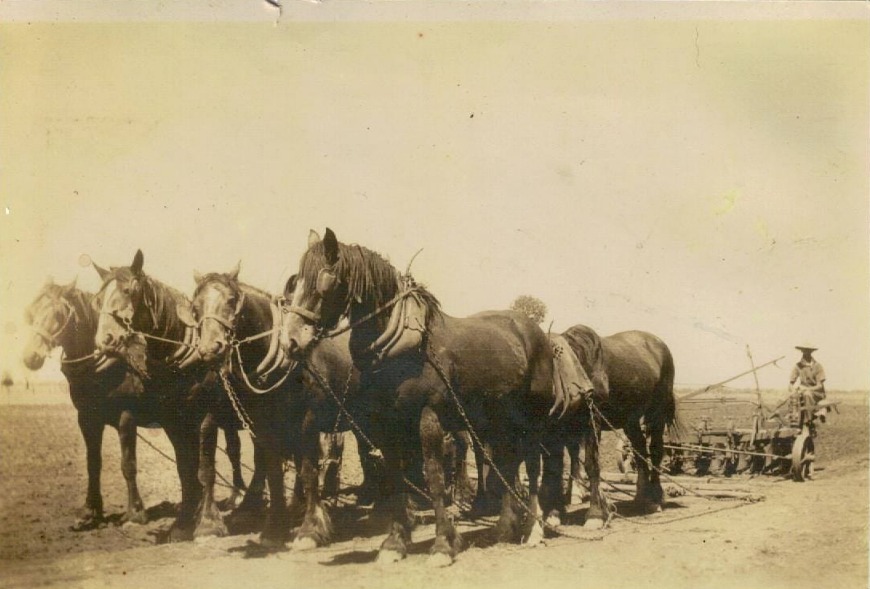
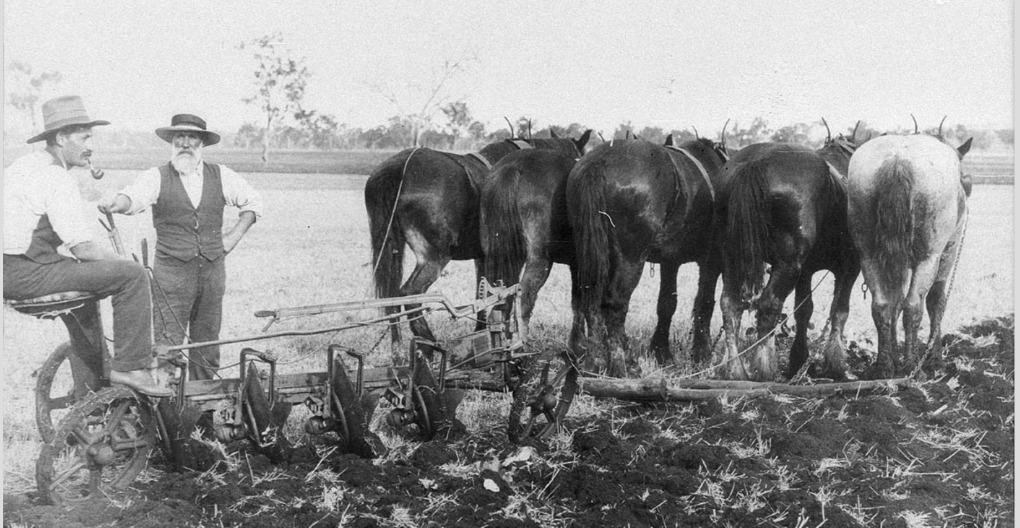
Carting wool to cities and ports was no small task, given the distances and weight of pressed bales, not to mention the arduous effort required to load and unload and traverse rough tracks and roads. Photos below taken by Amos B Watts were supplied by his great-nephew Mick: “Wagon loaded with bales of wool from Landsborough Downs, Hughenden, circa 1923. The second photo was taken after they attached the extra team of horses to pull this wool wagon out of a bog, circa 1924.“
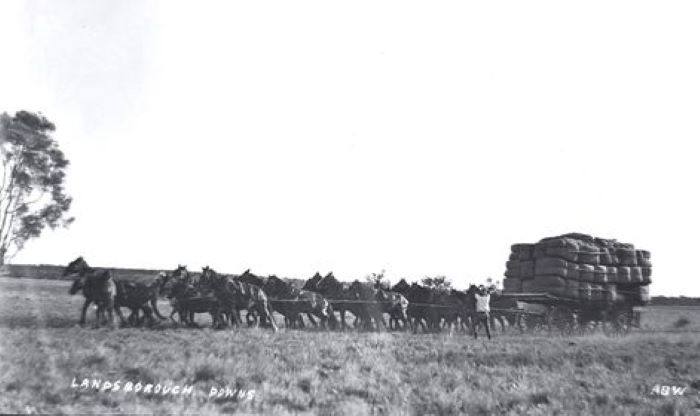
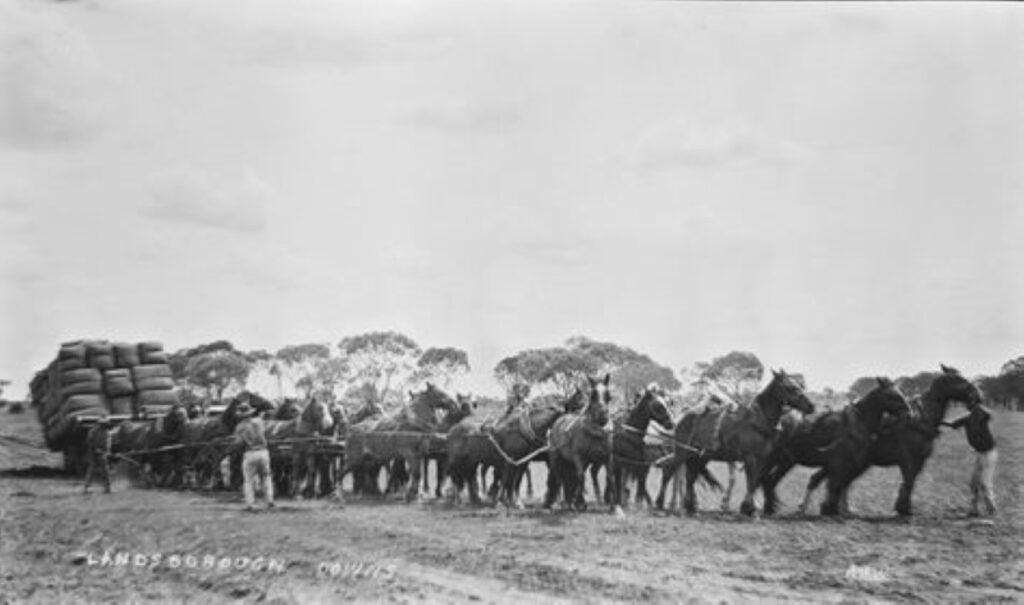
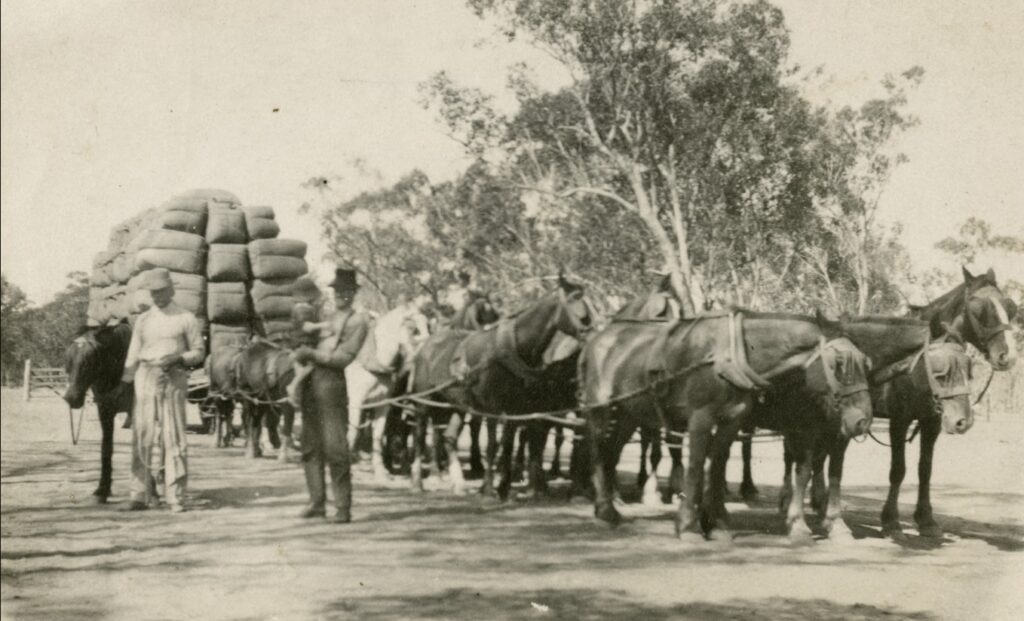
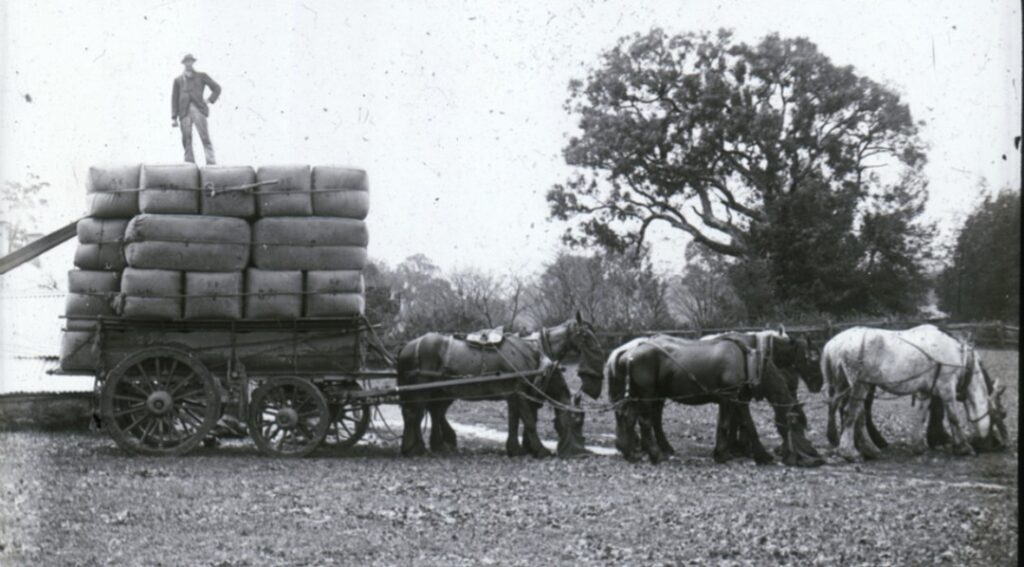
Images: Horse team loaded with bales of wool near Warroo about 30 miles from St George Queensland. C. 1907-1921.’ Harold Leahy photo State Library Qld; Horses feeding from nosebags during a break in loading a wagon with wool bales. c. 1904. Keyneton Collection State Library S.A.
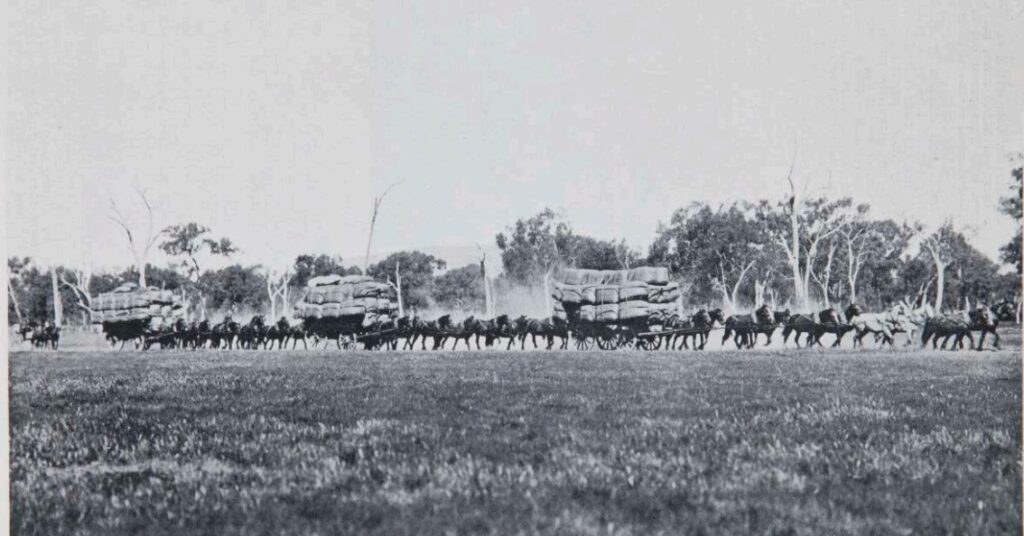
Comment on the photo above from Alan Thompson: “I think the picture was taken @ Clifton Station between Wagga Wagga & Holbrook a little place called Kookadinia. My Grandfather Charles Perry was the Manager. My mother was the eldest of 10 plus 2 cousins raised in the same family.
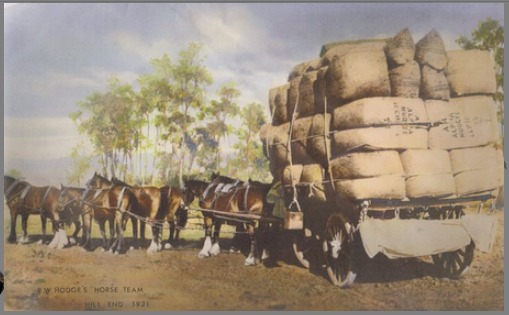
Photo sent in by Rohan Williams
“It is my Great Uncle Roland Hodge’s horse team at Hill End in 1921. He and my Grandfather ran the family carrier business between Hill End and Bathurst for the first half of the 21st Century. My Great Grandfather had started the business in the late 1800’s.
Here the wagon is loaded with wool from Alpha, Hill End. Alpha was (and still is) a well known fine wool producing property in the Hill End district. That load would have been headed to Bathurst where it would have been loaded onto the train for the Sydney Wool Stores.
My Uncle Role would cart 6 days per week and shoe the team each Sunday. He had his own Blacksmith forge at “Maitland Camp” where he lived, four miles east of Hill End. Maitland Camp (the building) was an old Cobb & Co coach stop which had previously been relocated from Hill End onto our family’s property. Maitland Camp still stands today although it has been amalgamated into a neighbouring property.
The family carrier business, of course, evolved into a trucking business as technology advanced beyond the age of the horse drawn economy. My Grandfather and Great Uncle continued with trucks on the Bathurst/Hill End route until they sold the business to another family in Hill End during the 1950’s.”
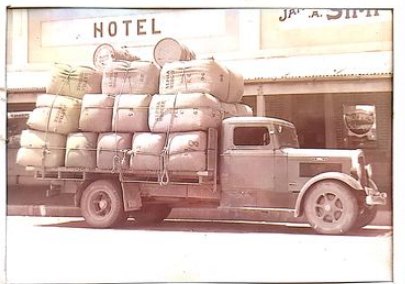
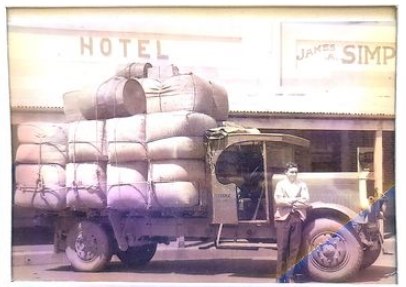
Droving and managing the welfare of stock was behind everything that happened on the land, often romanticized, but actually just plain hard work, often lonely and dangerous.
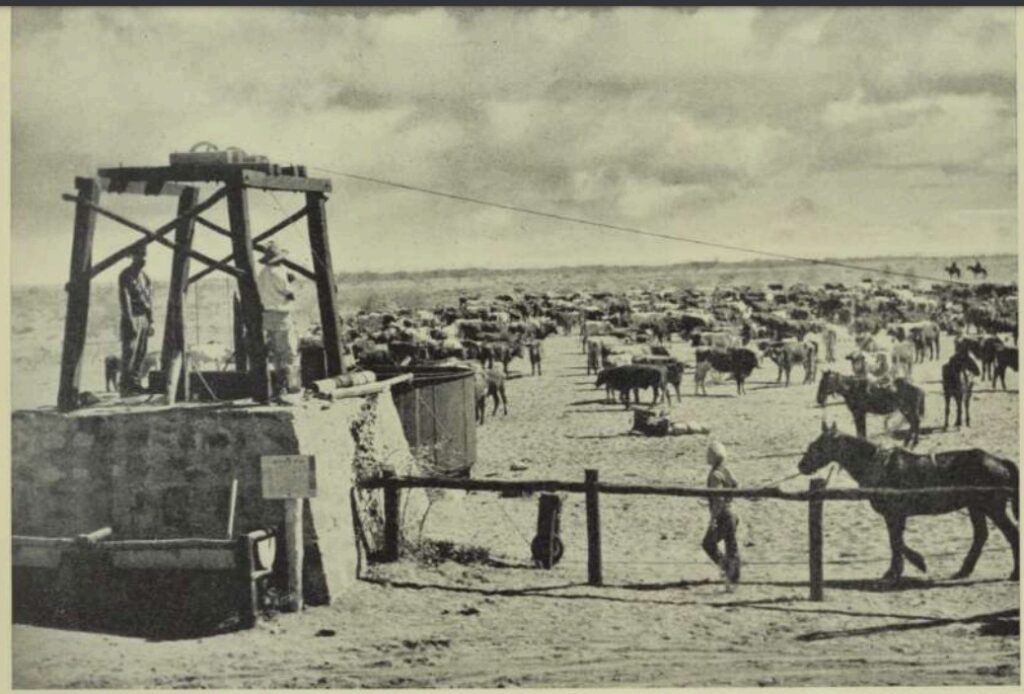
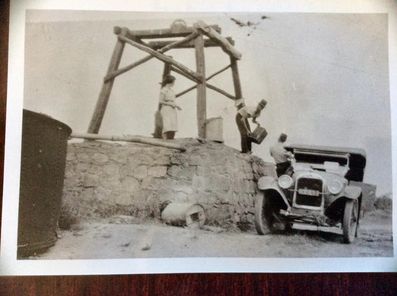
Personal photo supplied by Neil Middleton: “The wells must have all been constructed in the same design. This is a picture of my father (before he was) and my auntie getting water in Tennant Creek in the 1930’s.” Two photos below from Walkabout, 1st April 1956 (please be aware there is an imagine of an Aboriginal person of the past who may have passed on, which may cause distress).
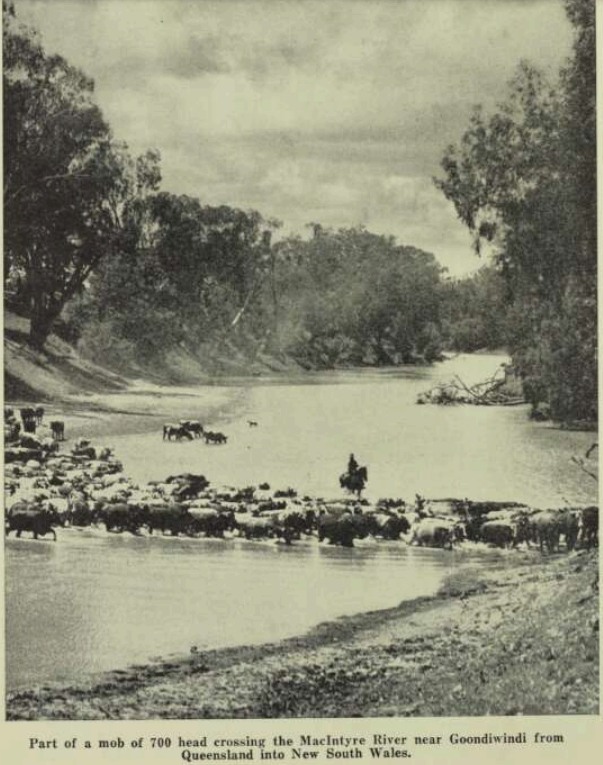
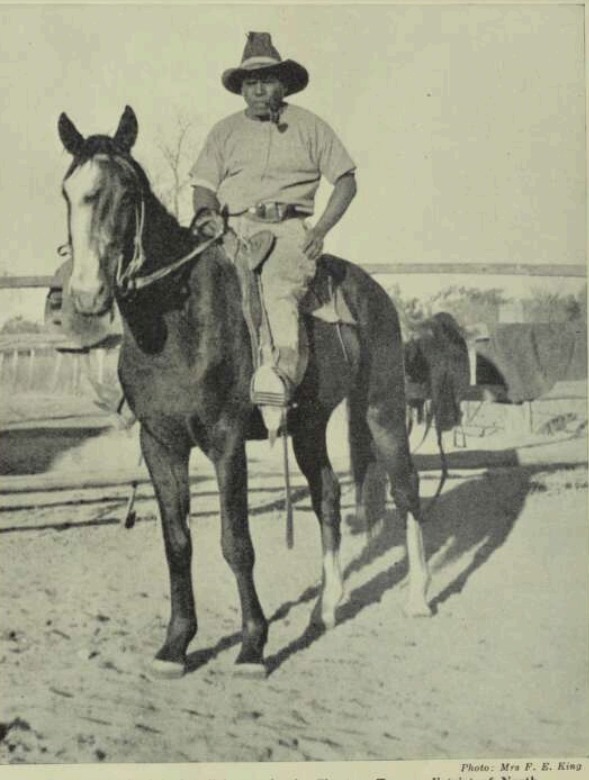
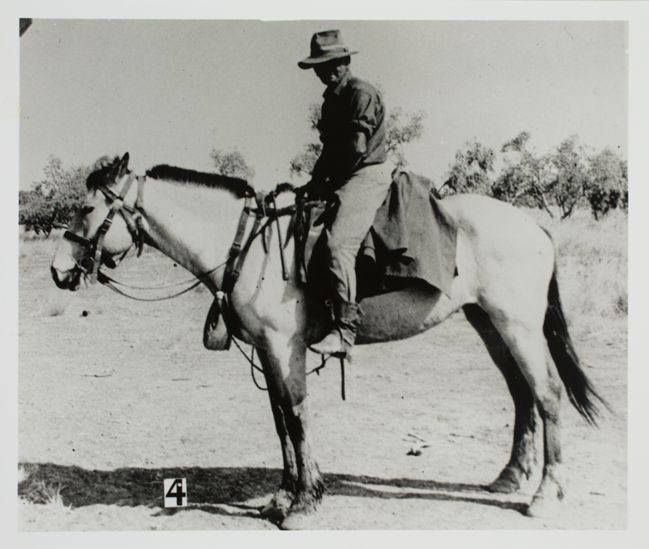
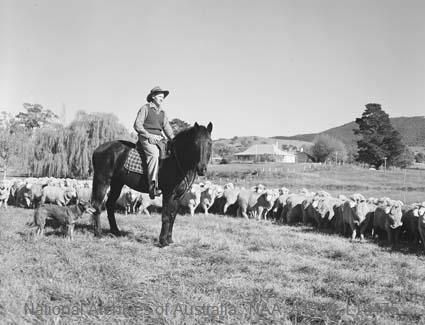
Images: Drover, Slippery Prendergast. B.C. Mettam collection Territory Stories; A drover mustering sheep on Uriarra Station, near Canberra. 1955. Photo by W. Pedersen. National Archives of Australia.
Thankfully logging of old growth timber is an industry of the past, but at the time we had amazing horses and men working in our forests. Just incredible to think how strong those horses were, and such fortitude displayed by the men who partnered with them. These two photographs sent in by Rod Roper tell the story: “my Granddad, Herbert ( smiler) Rushforth (1882-1960),first on left, and his team of horse somewhere south of Collie WA 1920ish; him again standing on middle of log around 1910.” The Jarrah and Kari ‘forests of the giants’ in WA provided a rich haul of beautiful timber for furniture making.
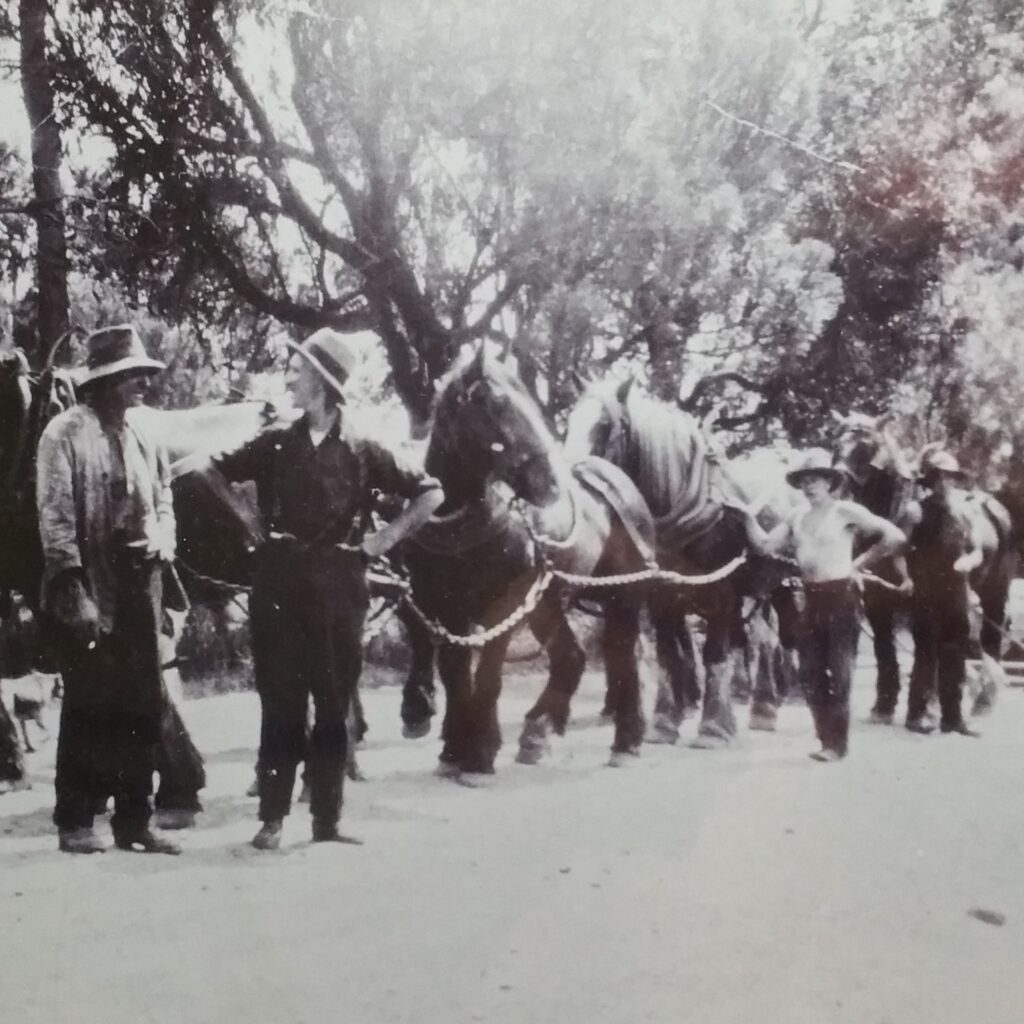
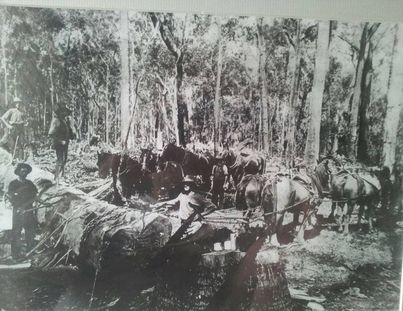
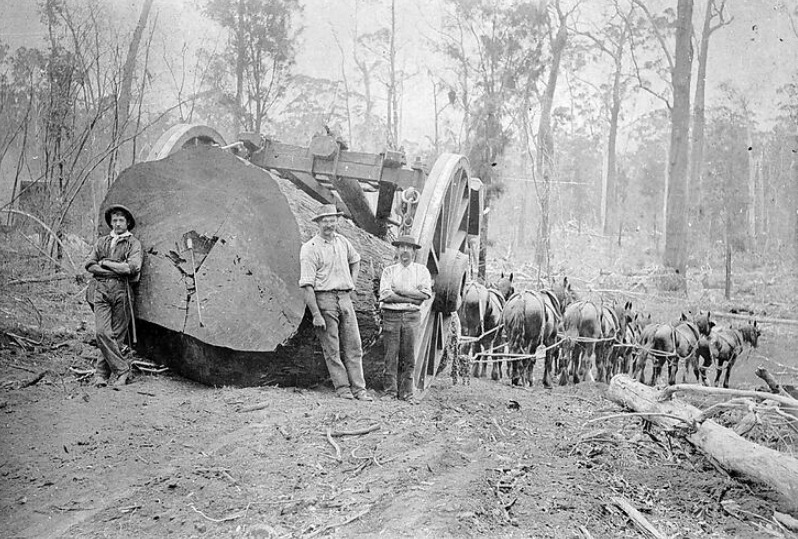
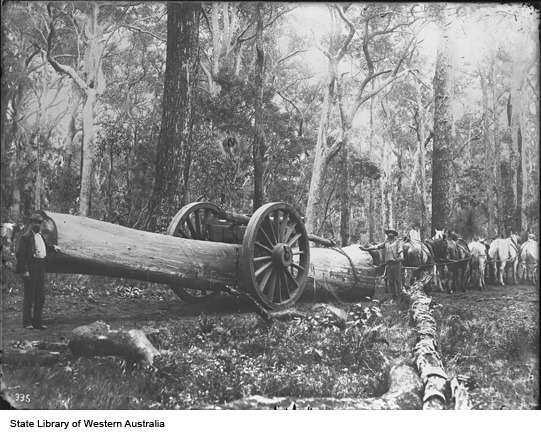
Images: Albany District, Western Australia, circa 1900. Individuals Identified: Collins, James Sullivan.’ Museums Vic; Two men with horse team and timber whim hauling a large log. State Library W.A.
Great photo of Abraham Pegg’s horse team hauling timber, probably taken at Mt Perry, Queensland.. He’s the great great grandfather of David Black, who kindly sent this photo in….“Australia was harsh and Rugged land. My Great Great Grandfather was Teamster and Bullocky who carved out a living along with his brother. Our early pioneers worked hard and relied on their Animals for survival.
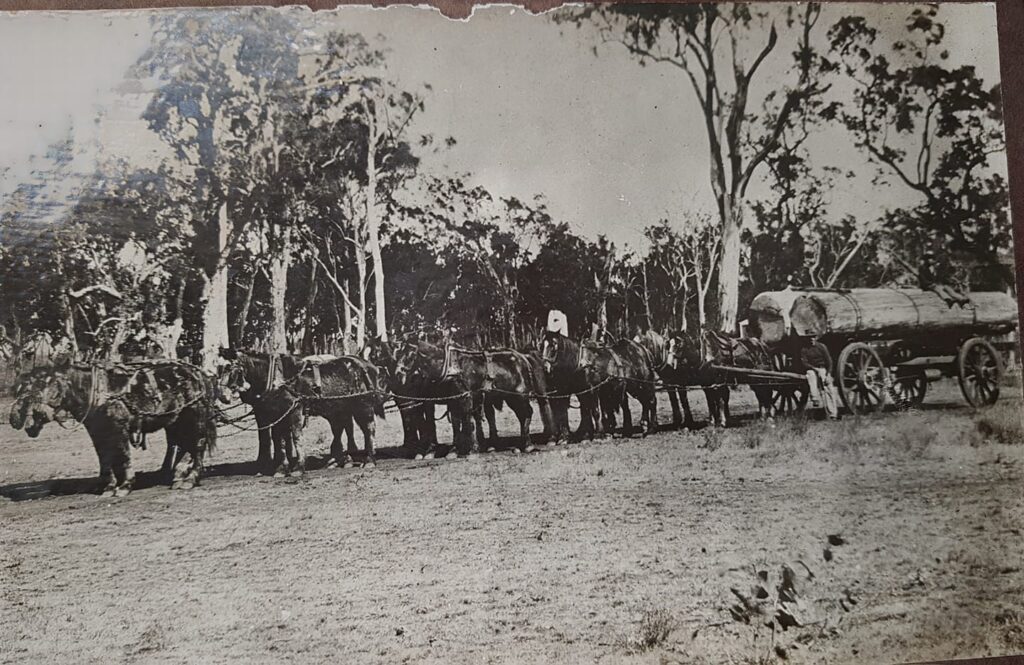
The Horse Team is most likely Mt Perry, Gin Gin area and the Bullock Team Longreach. A little of background Abraham Pegg. As a child he was one of the first white setters In a place now known as Gin Gin As a Shepherd he played a part of droving 10600 sheep and 800 cattle from New South Wales to settle roughly 400 km north of Brisbane arriving 1848.
On 4th of June 1849 while tending their sheep he witnessed his two brothers speared to death by local Aboriginals.
He survived and with his other brothers grew up giving back to the community, petitioning for a school.
He was a Teamster and Bullocky hauling Cooper, timber from Mt Perry to the now growng town of Bundaberg, it being established in around 1863 and supplies back to Mt Perry. He had strong business untill the train line was built. His brother was astablish in Longreach. During these early time of his successful business he had settled some land just out side of Bundaberg. He then became the first person to go Sugar Cane in his area.
He had 19 children ,8 with first wife, my Great Grandmother was number 7. He died in 1908 and was buried in a private grave along with a number of family members on his then farm Glenmore. They now lay beneath a strawberry farm. This is how tuff our early settlers had it.”
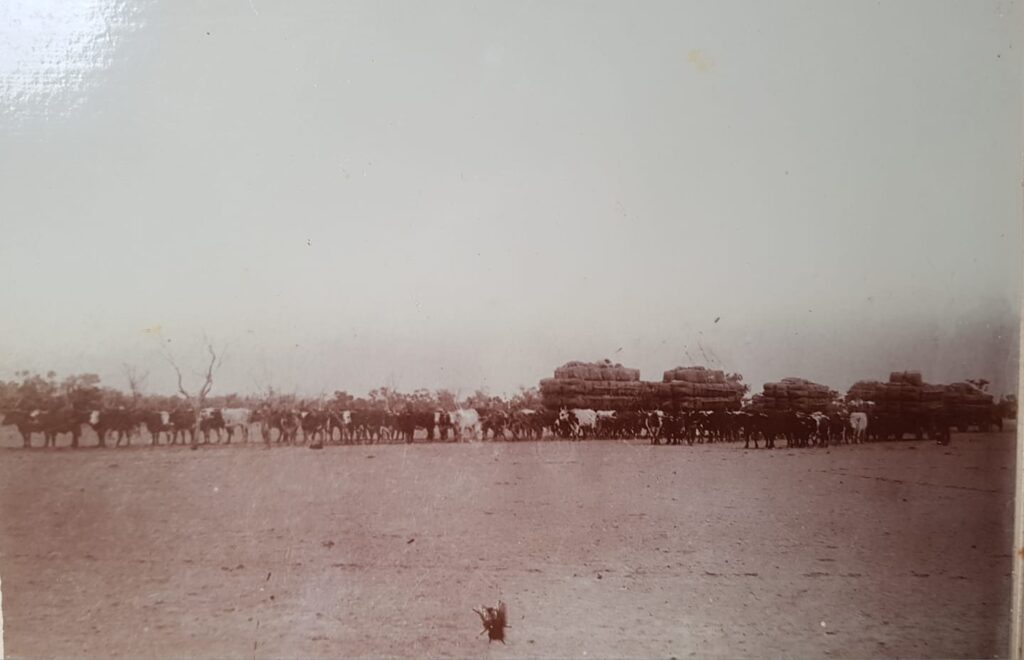
A favourite topic we have covered before is that of scoop horses, dusty long days dragging out soil to sink dams and tanks. What a sight these teams must have been!
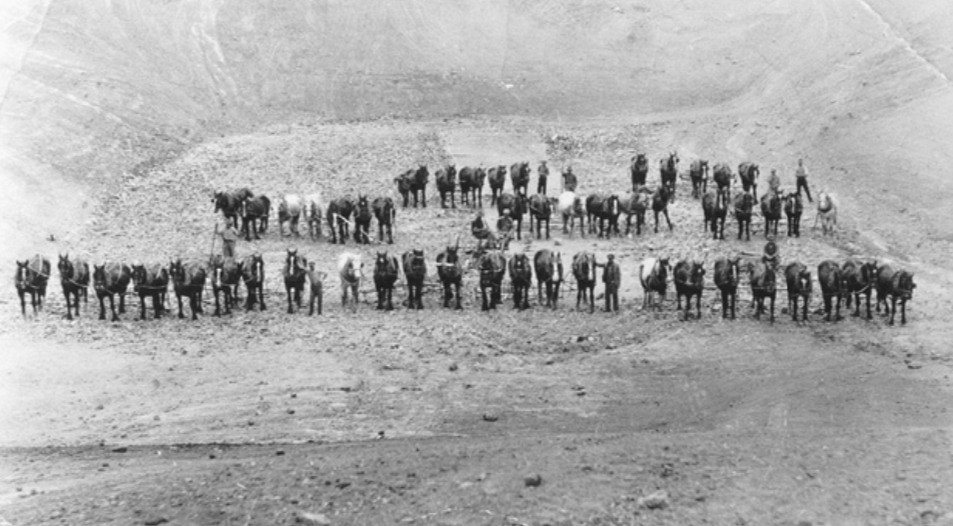
Mingary dam horse teams. Distant view of horse teams used for the construction of the dam at Mingary; five horse teams at the back owned by Les Bailey, left and Jim Norris; centre row: seven horse team owned by Ern King; six horse team owned by Allan King; five horse team owned by Alf Matthews; front row: eight horse team owned by Frank Ruddock; eight horse Clouth team; eight horse team owned by Alf Bailey. 1930. State Library SA.
Mingary is in a hot arid area of South Australia, about 74 k west of Broken Hill (NSW). There was a copper mine there, a village formed of miners and their families; water was needed. Two dams were put in. And it’s also known as tank sinking as technically of course a dam stops a water course.
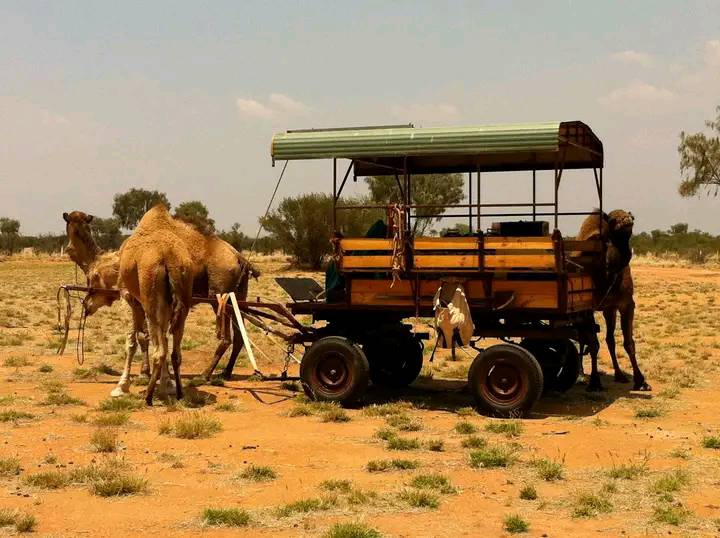
Debi Robinson photo of her wagon; once “E.Scobie’s ‘Overlander‘”
It needed TLC when she got it, Debi replaced all the wood but retained the name board, and most of the steel, also added tyres and a roof. Debi is a legend herself – she’s crossed entire continent of Australia about six times in this wagon – raising her children in the process -and all pulled by camels! I’d say she’s done more camel miles in a vehicle than anyone in Australia! Has her beloved wagon and magnificent camels to this day.
David E. Scobie had the Marree- Birdsville mail run in 1929 (and four other years, saw had the contract 1931) and Montie Scobie (he may have spelled it Monty, just using a caption spelling) in the 1940’s.
From Debi: “I grew up with Angus Scobie so it was personal..he would come out to the Station and get all the saddles etc up to scratch for the mustering. We’d have hides pegged out for whips and hobbles. I was extremely shy and shadowed him most of the day. Loving the smells and his quiet demeanor.”
The Scobie family had pastoral runs in the area. Jim Scobie was on Mulka. Alec Scobie and family were on Ooroolwilania, in 1938 they’d been there 40 years, well known for hospitality to travelers and drovers. Dave (David) had New Well, then was on Allandale near Oodnadatta. He had the Marree – Birdsville mail contract about 5 years (details in news clippings) then the Farina – Cordillo Downs.
Jim did that mail run for a time too, before Dave, possibly driving for Harry Ding who took up the Maree-Yunta mail run in the early 1930’s, one of the toughest runs in Australia. He had a truck for the service.
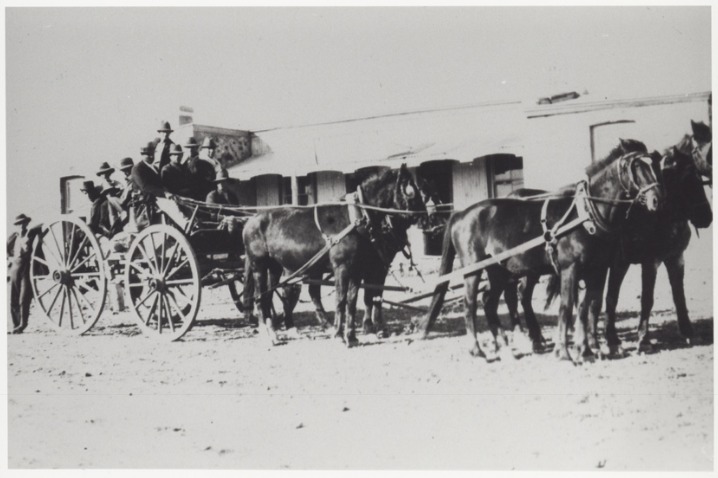
Image: The Horse Mail Coach outside Innamincka Hotel. 1910. State Library S.A. Dave Scobie took on the Farina-Innamincka-Cordillo Downs run later, possibly this is Debi’s vehicle? Sometimes the mail to Cordillo was taken by a proper coach pulled by camels (usually sand bogged on route) sometimes by pack horses, sometimes by mule, sometimes motor vehicle.
And maybe it’s this one? Old Birdsville mail [transparency]: a lantern slide used by John Flynn in lectures 1912-51. State Library S.A
!['Old B'ville [i.e. Birdsville] mail [transparency] : a lantern slide used by John Flynn in lectures 1912-51.' SLSA](https://walerdatabase.online/wp-content/uploads/2024/09/Old-Birdsville-Mail.jpg)